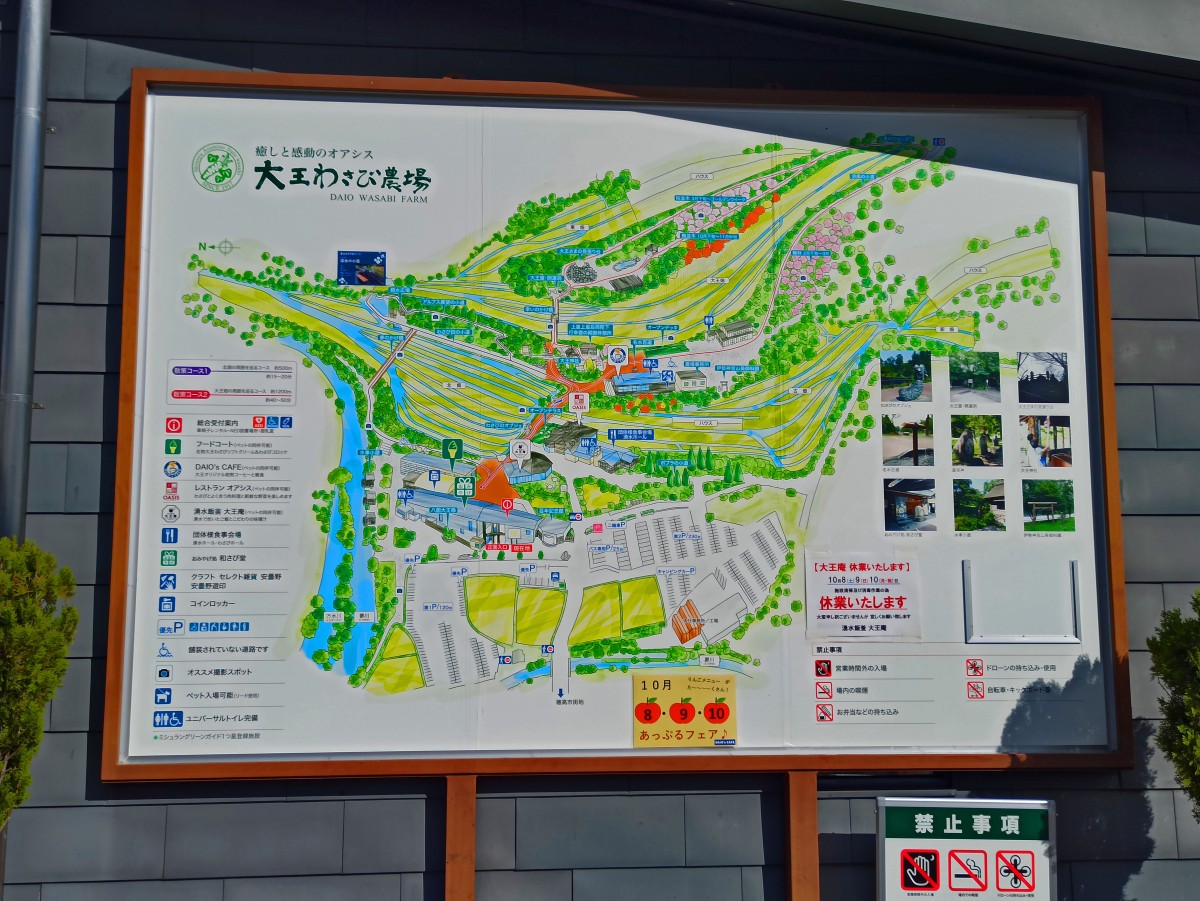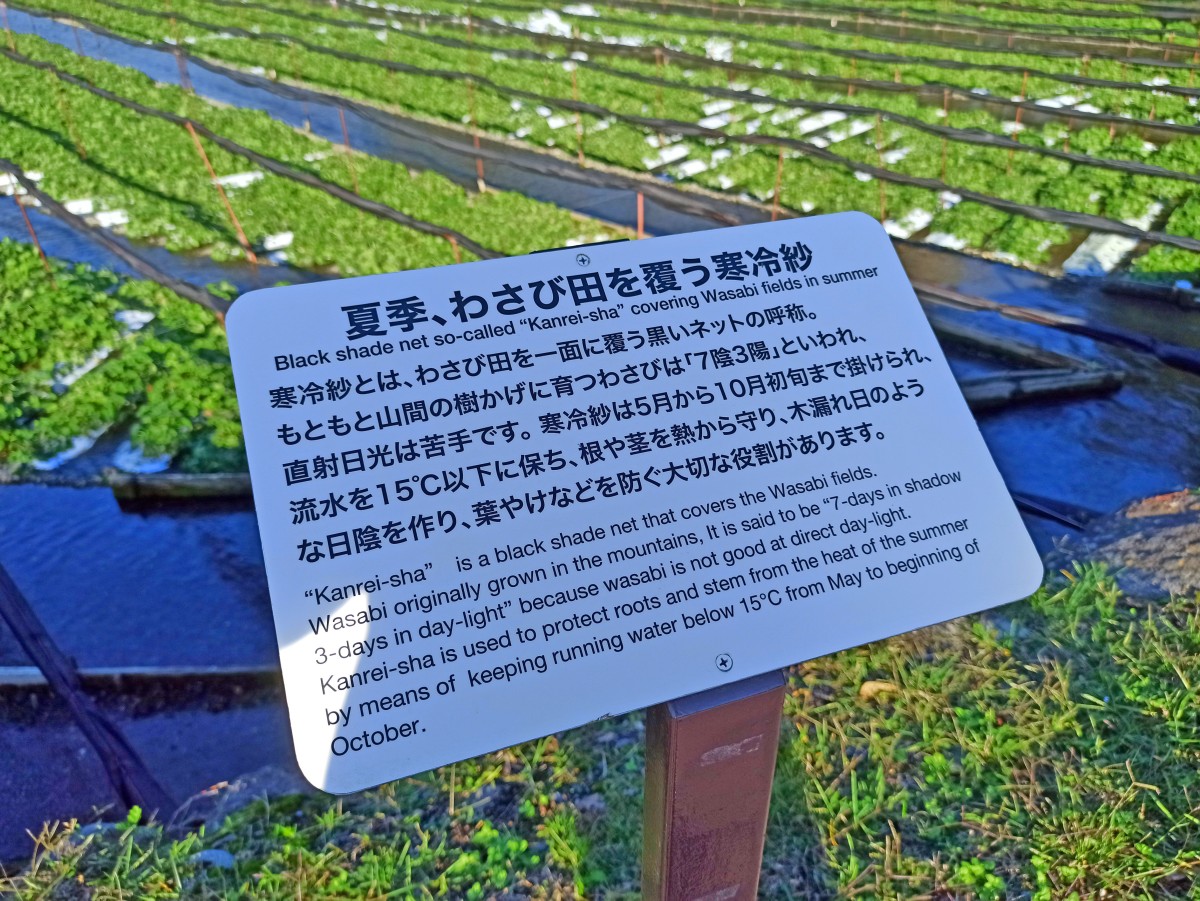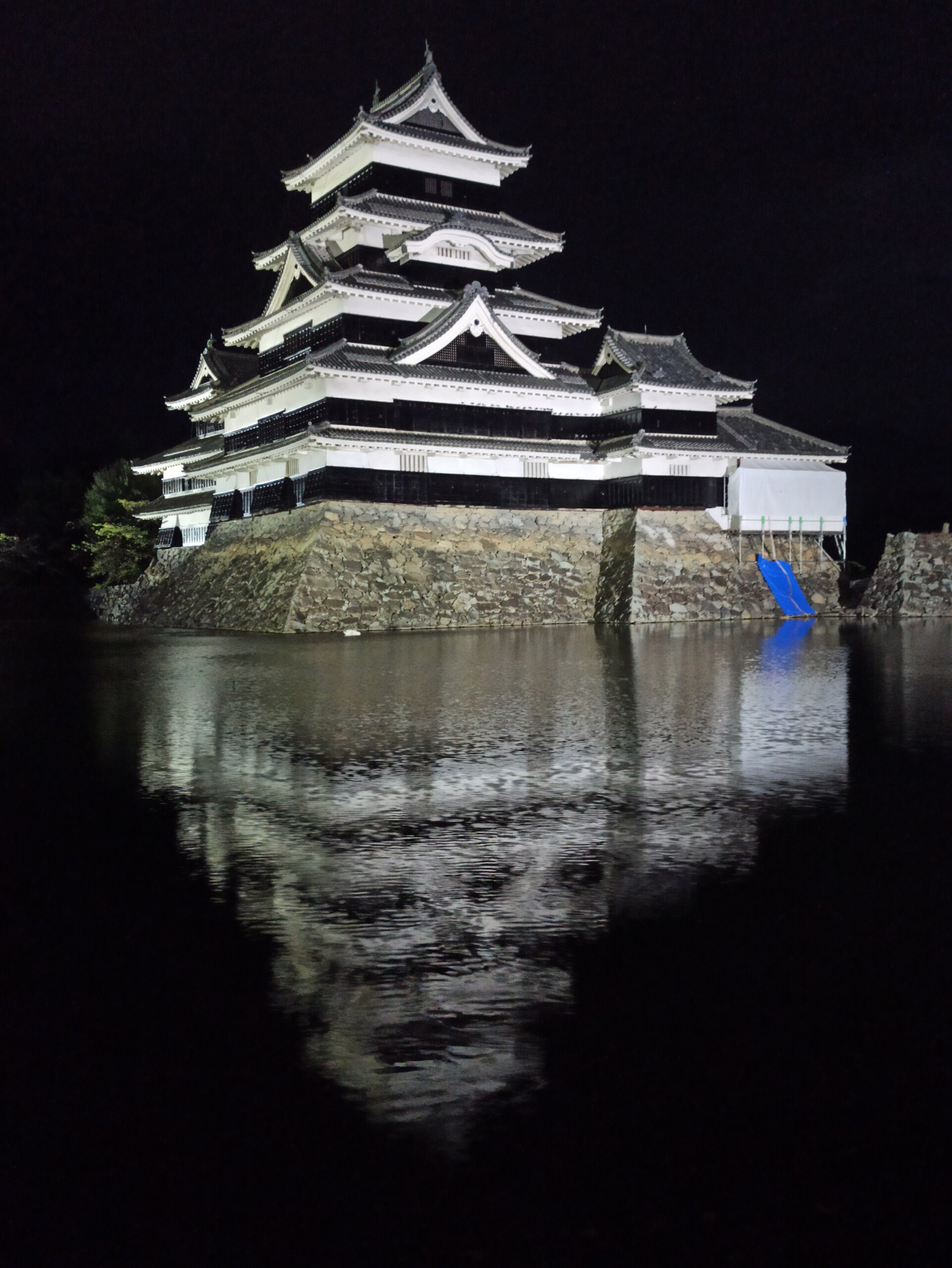In this installment of No Work All Travel, I will be introducing a Tokyo weekend trip to Nagano prefecture. More specifically, a voyage to the castle city of Matsumoto, and Daio Wasabi Farm, in Hotaka.

The first recorded instance of wasabi, sushi’s hot-headed colleague, dates back to the year 981, during the Heian period of Japanese history. Someone wading through the Japanese Alps had thought its leaves looked like those of the mallow plant (in Japanese, 葵/あおい/aoi), consequently wasabi was first written as 山葵, or “mountain mallow.”
Then, during the Muromachi period (roughly 1392-1573), pairing wasabi with sashimi became a thing. Typing that out, I feel somewhat stupid, but in my defense, A) it’s written on the sign below, and 2) I reckon it’s one of the most famous duos in any cuisine today.

I know, you’re not here to become an ethnobotanist. You want peak wasabi, right?
To plan your Tokyo weekend trip to Nagano, the Daio Wasabi Farm (unofficial English reference page) in Hotaka stands out as a unique spot to visit. And at around a 30 minutes walk from JR Hotaka station, it was a pleasant — and sometimes delicious — diversion from the norm.

The Daio Wasabi Farm (official Japanese site), which opened in 1915, is purportedly the largest of its kind in Japan. Interestingly, within Japan Nagano prefecture competes with Shizuoka prefecture, also known for its green tea production, for the title of largest producer of wasabi. (link in Japanese)
Maybe naively, I was expecting to be detained by the smell of the fresh wasabi plants, and to see farmers using goggles and masks when handling Japan’s most famous rhizome.
Whoops, wrong on both counts.


Wasabi plants aren’t huge fans of direct sunlight, so that’s why dark breathable cloth is used to cover them much of the time (in the two photos above, you can see the dark cloth rolled up).
After walking around the beautifully kept farm, dipping my toes in the frigid spring water, and sampling some gimmicky snacks and drinks flavored with wasabi, I continued on to the Nagano city of Matsumoto, just under 30 minutes away by train from Hotaka.

The castle, nicknamed the “crow castle” due to its unusual black facade, was built in 1594. It’s one of a mere 12 original castles left in the country, and perhaps the second most famous, after Himeji.

For a Tokyo weekend trip to Nagano, Matsumoto is a good choice. The fastest route from Tokyo station is around 2 hours and 40 minutes, with a stop in Nagano city.
As for sightseeing, in addition to the castle, it has some pleasant canal walks, a good food scene focused on soba, and some unusual architecture, too.
Yeah, about the soba ….
You might be asking, “did you even try fresh wasabi?” Sure did! I even bought a steel grater (おろし金/oroshigane) for it (traditionally, wasabi graters were made of sharkskin). Immediately thereafter, I thought, what a pointless idea … on what/at which point would I even grate the darn thing?
Why not take it to a random restaurant and see what happens?:

A simple explanation to the kind waitress at Kitamon soba restaurant in Matsumoto let me sample the true flavor and texture of nama wasabi, or fresh wasabi. Basically, it’s NOTHING like the neon green stuff you’ve been eating (and that’s a good thing).
Even if visiting a wasabi farm isn’t your thing, a Tokyo weekend trip to Nagano offers up some beautiful hiking trails, as well as quaint towns, and of course, good eats.

Leave a Reply